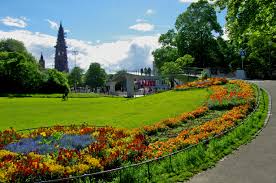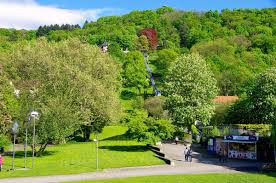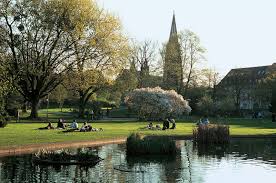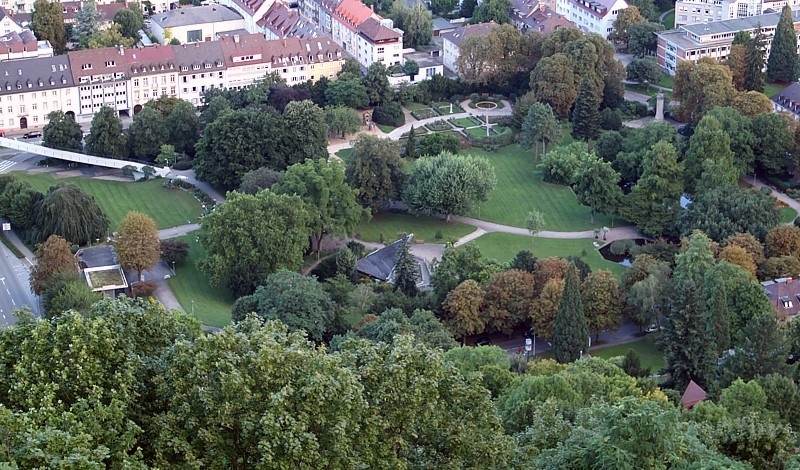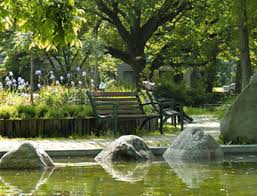The garden is well cared for with old trees, rose garden, standing family, summer gardens, wells, pond and playground
"Oberrheinische Gewerbeausstellung" 1887, which took place in Karlsplatz at that time, gave the former training and measurement station, the motivation to create a permanent city park. City gardener Schmöger (1874-1918) was commissioned in the same year of the exhibition by the city council to plan and implement it. After only one year, the factory was finished. The new annex around the Concert Hall features a musical pavilion, a water fountain, fountains and flowering flowers.
More than 500 shrubs from 250 different species were collected around a semicircular hill. Already at that time a children's playground was created. In the years 1889 to 1895, the city took over the western slope of Schlossberg and built it as a forest theme park. During World War I, care was inevitably neglected, so the transition from 1920 to 1924 was necessary. This shift took place until the bombing in November 1944, during which the concert hall was destroyed.
After that, things progressed slowly, because there is more to build a new city park. In 1948, roads were cleared and bombarded. In 1952 the restoration process began and after a year of expansion to the north, which was again required in 1967 to build Leopoldring. Unfortunately, the valuable trees had to give way and the city park was reduced by إلى to the size of the day.
With the construction of Schlossbergbahn, which was scheduled in 1914, it began only in the 1960s. The city park received its current shape with the necessary fillings and is still the most visited green area near the city.

